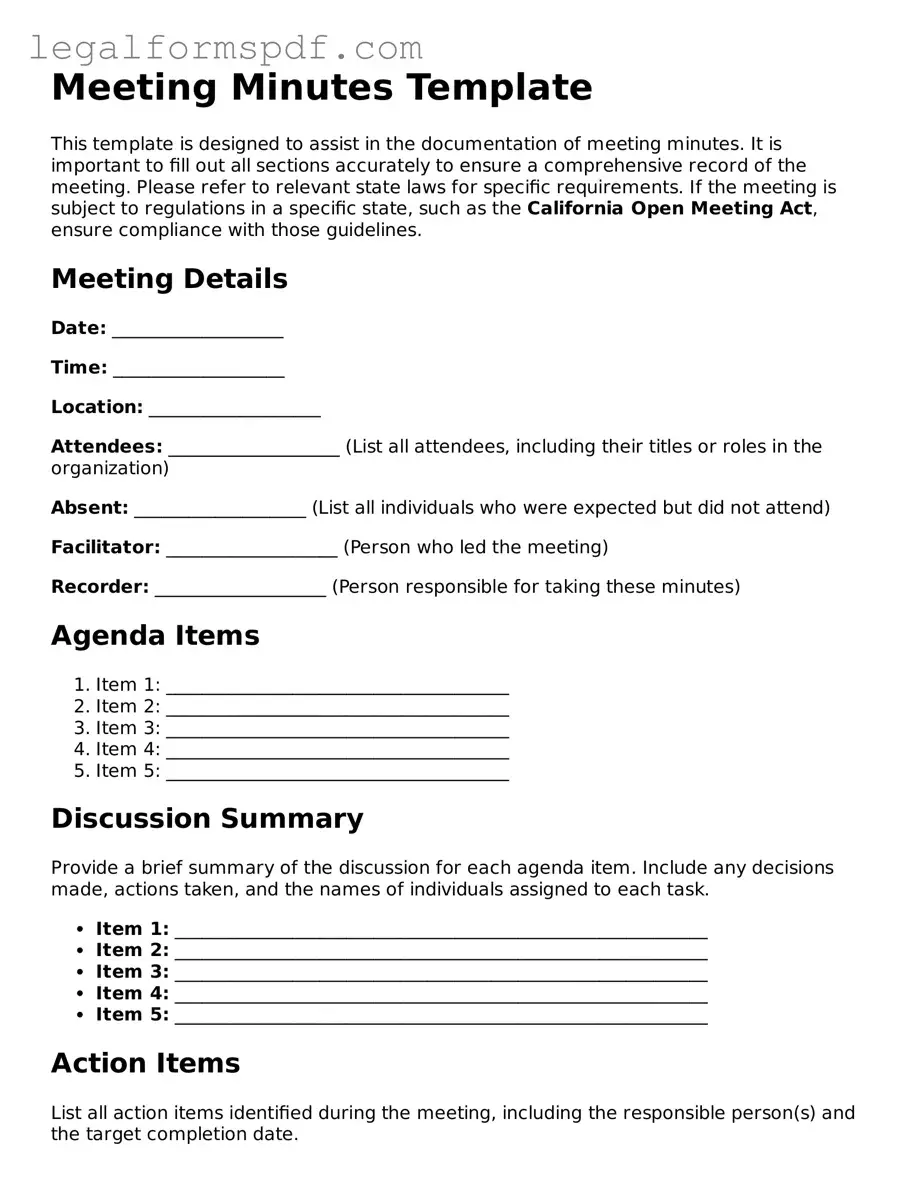What are Meeting Minutes?
Meeting minutes are a formal written record of the discussions and decisions made during a meeting. They serve as an official and legal document that can be referred to later to understand what occurred during the meeting, what decisions were made, and what actions need to be taken forward. Meeting minutes typically include the meeting's date, time, location, a list of participants, a summary of the discussion points, decisions made, and assignments of tasks.
Why are Meeting Minutes important?
Meeting minutes are important for several reasons. They help keep a record of decisions and actions agreed upon in the meeting, ensuring accountability and clarity in what is expected from the participants moving forward. They serve as a point of reference for those who were unable to attend the meeting. Additionally, they help in the tracking of progress over time, providing a historical context for decision-making and project management.
Who is responsible for taking Meeting Minutes?
The responsibility of taking meeting minutes typically falls on a designated minute-taker, often an administrative assistant, secretary, or clerk. However, in the absence of a designated individual, any member of the meeting can be assigned this task. The choice of the minute-taker can depend on the meeting's nature, the organizational practices, or the preferences of the meeting's leader. It is crucial for the minute-taker to be attentive and detail-oriented to accurately capture the proceedings.
What should be included in the Meeting Minutes?
Meeting minutes should include specific key elements to ensure they serve their purpose effectively. These elements include the meeting's date, time, and location, a list of attendees as well as any absentees, a brief description of each agenda item discussed, decisions made, actions to be taken including deadlines and responsible persons, and any other important information or observations. Accuracy and conciseness are key in writing effective meeting minutes.
How should Meeting Minutes be formatted?
While there is no one-size-fits-all format for meeting minutes, it is generally recommended to keep them clear, concise, and easy to read. A common structure includes headings for each section such as attendees, agenda items, discussions, decisions, and actions, followed by bullet points or numbered lists for details under each section. Using templates or consistent formats across meetings can help in maintaining efficiency and readability.
Are Meeting Minutes confidential?
The confidentiality of meeting minutes can vary depending on the nature of the meeting and the organization's policies. Some meetings, particularly those involving sensitive or proprietary information, may require that the minutes are kept confidential and only shared with a limited group of individuals. It is important to be aware of and adhere to any confidentiality agreements or organizational policies regarding the handling and distribution of meeting minutes.
How long should Meeting Minutes be kept?
The retention period for meeting minutes can vary depending on the organization and the type of meeting. Generally, meeting minutes should be kept for at least as long as they are legally required or as they serve a useful purpose. For organizations bound by specific regulatory requirements, it is crucial to comply with the stipulated retention periods. In many cases, it is advisable to keep meeting minutes for several years for historical reference, accountability, and governance purposes.
